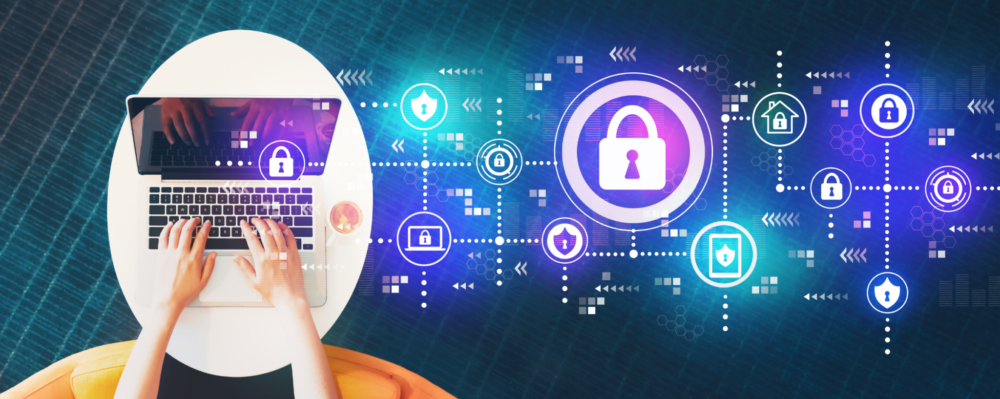In an era defined by digital transformation, businesses are increasingly reliant on SaaS solutions to streamline operations and drive growth. With the rise of SaaS adoption, however, comes the increasing need for robust and proactive cybersecurity measures.
As organizations entrust their data to cloud-based platforms, ensuring compliance for SaaS and safeguarding against cyber threats are vital concerns. In this article, we are taking a closer look into the relationship between cybersecurity and SaaS, including an overview of the essential considerations and best practices for securing cloud-based applications.
What Qualifies as SaaS?
SaaS encompasses a wide range of cloud-based applications that are hosted and delivered over the internet. These applications are typically subscription-based, allowing users to access them from any device with an internet connection.
Common examples of SaaS include email services, document management systems, customer relationship management (CRM) software, and collaboration tools. With each unique SaaS application an organization adopts, cybersecurity must be considered. Can you count on your company’s data and assets to remain safe and secure? What about your customers’ accounts and personal information? Customers are increasingly security-conscious and won’t often continue doing business with a company that doesn’t have a reliable cybersecurity posture.
What are the Seven Security Issues in SaaS?
In the context of cybersecurity, SaaS applications can present a wide range of security challenges for businesses to address. From data breaches and malware attacks to insider threats and compliance violations, the list of security issues in SaaS is extensive and ever-growing.
By understanding these challenges, though, organizations can implement proactive security measures to mitigate risks effectively.
For companies that leverage one or more SaaS solutions to power their operations, there are a number of distinct challenges to be aware of. You can learn about these in an extensive guide put together by the Information Systems Audit and Control Association (ISACA), which describes the following challenges:
- Data loss
- Unauthorized access
- Insecure APIs
- Shadow IT
- Vulnerability management
- Risk mitigation
- Event visibility
In all, the ISACA defines a total of 12 SaaS security risks and challenges, including risk management related to third-party and fourth-party data access, disaster recovery procedures, and more.
What is SaaS in Cyber Security?
SaaS in cybersecurity refers to the delivery of security solutions through a cloud-based subscription model. Unlike traditional on-premises security software, SaaS solutions are hosted and managed by third-party providers.
The SaaS delivery model is a popular one, as it offers several compelling advantages—like scalability, flexibility, and cost-effectiveness. They’re typically pretty easy to implement, and SaaS providers also offer plenty of documentation and guidance to help you get your systems up and running—as well as thoroughly secure.
The best SaaS security solutions are versatile and comprehensive, offering protection against a wide range of cyber threats, including malware, phishing, and unauthorized access attempts.
What to Look for in SaaS Security
When evaluating SaaS security solutions, organizations should consider several key factors to ensure comprehensive protection against cyber threats. If you’re looking for a robust SaaS security checklist, NIST provides one example. The NIST checklist is meant to help organizations assess the effectiveness of SaaS security measures, and includes 6 key considerations:
- Understanding the security features being offered by each SaaS provider you consider; be sure to ask plenty of questions, especially ones related to your specific use case(s) and priorities.
- Inventorying the various types of data and other assets that must be secured; this way, nothing that might threaten your cybersecurity goes unnoticed.
- Implementing internal policies around the storage of personal information; minimize your risk by only storing what’s essential.
- Encrypting data, especially when it’s rarely accessed or utilized.
- Maintaining vigilance around security measures, and paying attention to anything that seems out of the ordinary—like unusual or unauthorized access to certain data or system warnings.
- Creating a culture around cybersecurity, wherein all stakeholders assume responsibility for keeping data and assets safe and being vigilant about emerging threats.
Ultimately, cybersecurity is an absolutely critical aspect of any SaaS-based application or environment, with SaaS security companies playing a crucial role in safeguarding cloud-based applications and data. By addressing security issues proactively and adopting SaaS security best practices (like those listed above), organizations can minimize the risk of data breaches, compliance violations, and other cyber threats.
Ready to Enhance your SaaS Security Posture? Start with Trava.
As businesses continue to embrace SaaS solutions for their operational needs, prioritizing cybersecurity is essential to protect sensitive data and maintain customer trust. At Trava, we take cybersecurity seriously and have developed an innovative platform to help organizations maintain compliance and mitigate risk.
Contact us today to learn more about our comprehensive cybersecurity solutions, and how we can tailor them to your unique business needs. You can also browse our website to see our full cybersecurity services list. With our expertise and industry-leading security measures, you can safeguard your SaaS applications and data against evolving cyber threats.


